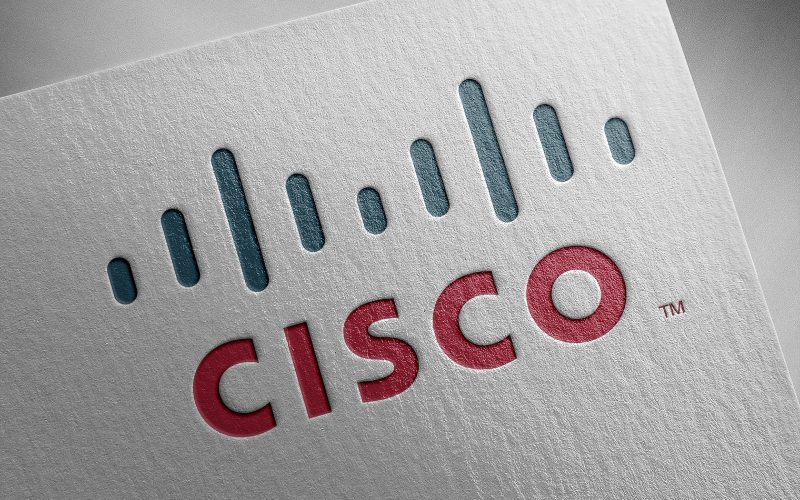Cisco confirms voice-phishing breach: what CEOs need to know
by Aaron Flack on Aug 6, 2025

On 5 August 2025, Cisco disclosed that attackers had stolen basic profile data for an undisclosed number of Cisco.com user accounts. The criminals used a voice-phishing (vishing) call to trick a Cisco representative into granting access to a third-party cloud Customer Relationship Management platform. Once inside, they exported names, company details, postal addresses, Cisco-assigned IDs, email addresses, phone numbers and account-creation metadata. No passwords or payment-card information were taken, and Cisco insists its core products and services remain unaffected. The company says it cut the attacker's CRM session on 24 July, opened an internal investigation and notified global data-protection regulators.
Voice phishing weaponises trust. Attackers know senior staff will often pick up the phone faster than they will answer an email. In this case, the caller posed as an authorised colleague, convinced the employee to share credentials or approve a one-time code, then pivoted into the CRM. Several technical gaps amplified the human lapse:
- Single-factor access to cloud systems: Even with multi-factor authentication (MFA) in place, if voice approval is possible, the system remains vulnerable to social engineering.
- Excessive data in cloud platforms: CRMs increasingly store rich user-identity data that attackers can monetise.
- Third-party blind spots: Cisco's own network was not breached, yet its customers were still exposed. Supply-chain risk is now a board-level issue.
- Hybrid work norms: Distributed teams rely on phone and collaboration apps, creating more channels for impersonation.
The mechanics are painfully simple, which is why they keep working.
What could the fallout be?
Regulatory exposure
Because personal data left the UK and EU borders, Cisco faces disclosure duties under the UK General Data Protection Regulation and could attract fines up to the higher of £17.5 million or 4%of global annual turnover if investigators find negligence.
Civil liability
Victims can sue for distress even when a tangible loss is unproven. The precedent set by the Lloyd v Google ruling means large-scale class actions are a realistic threat.
Operational distraction
Incident triage, forensic investigation, customer notification, legal counsel and insurance negotiation consume executive bandwidth that should be driving growth.
Share-price impact
High-profile breaches regularly trigger single-digit drops in market capitalisation within 24 hours, and slower recoveries when regulators get involved in a thin-margin quarter that can erase planned dividends or R&D budgets.
Trust deficit
Partners weigh risk when renewing contracts. A perception that "Cisco lost control of its data" will colour procurement decisions, especially in regulated sectors such as finance and health.
Why is voice phishing increasing in frequency?
- Explosive growth in social-engineering attacks: Vishing incidents jumped 1633% between Q4 2024 and Q1 2025, according to Bluefire Redteam trend data. Bluefire Redteam Cybersecurity
- AI voice cloning on demand: Open-source models enable anyone with a 30-second audio clip to generate convincing replicas of an executive's voice.
- Cheap, automated dialling: Cloud telephony lets attackers spin up thousands of concurrent calls for pennies a minute.
- Hybrid work and call fatigue: Remote-first teams answer unknown numbers from suppliers, partners and regulators every day, normalising unsolicited calls.
- Fragmented SaaS footprint: The average mid-size enterprise now uses more than 130 cloud applications. Each one adds another login and another help-desk workflow that a criminal can mimic.
- Official warnings: The FBI issued an alert in July 2025 about impostor calls purporting to come from government officials, underscoring that deepfake audio is now mainstream.
Steps to avoid it happening to you
1. Treat voices like any other unverified credential
Mandate a secondary channel check for every request that touches privileged systems. A quick message through a pre-agreed collaboration tool can break the attack chain.
2. Tighten CRM and SaaS access
Apply the principle of least privilege. Limit export rights to a small, audited cohort. Enforce strong MFA that cannot be overridden by phone approval alone.
3. Roll out targeted anti-vishing drills
Simulated calls, coupled with micro-training, teach staff to spot urgency loops and spoofed caller IDs. Focus on finance, executive assistants and anyone with admin rights.
4. Deploy real-time call analytics
Modern zero-trust voice gateways analyse tone, cadence and caller-ID anomalies, flagging potential deepfakes before users pick up. Integrate alerts into your Security Operations Centre workflow.
5. Extend incident-response playbooks to voice channels
Most organisations have an email phishing runbook, but nothing for calls. Build scripts for verifying callers, logging metadata and escalating suspicious interactions.
6. Stress-test third-party data controls
Run supplier risk assessments that include voice phishing resilience. Demand evidence of segmented data storage, enforced MFA and rapid revocation processes.
7. Link breach costs to balance-sheet risk
Finance teams respond to numbers. Model regulatory fines, litigation fees and churn to frame vishing as a strategic business threat, not an IT nuisance.
How much could cyber downtime cost your business?
This calculator gives you a clear, data-backed estimate of potential costs of downtime as a result of a breach or hack.
Total Estimated Cost:
Lost Revenue:
Staff Costs:
Reputational Loss:
Legal & Regulatory:
📈 Avg Recovery Time (with BCDR): 1.2 days
📉 Avg Recovery Time (no BCDR): 12.4 days
*Cost estimates use 260 working days/year and average salary £35,000. Reputational loss is 25% of lost revenue. Legal costs = £15,000 base + £1,000/day. Recovery times based on industry averages. Indicative only, not advice.
*Cost estimates are based on 260 working days/year and an average salary of £35,000. Reputational loss is estimated at 25% of lost revenue, based on industry research into post-breach customer churn, lost contracts, and trust erosion. This figure reflects average impact observed across SMEs and enterprise sectors in reports such as IBM’s Cost of a Data Breach. Legal costs are modelled at a fixed £15,000 base plus £1,000 per day of downtime. Recovery times are adjusted based on company size and turnover, using industry averages including IBM's Cost of a Data Breach Report. This should not constitute as financial advice*
If you would like to explore how artificial-intelligence-enabled social-engineering threats could affect your organisation, book a meeting with our security advisory team and start the conversation.
| Company | Resource Name | URL |
|---|---|---|
| Techcrunch | Hacker used a voice phishing attack to steal Cisco customers’ personal information | Read More |
| Bleeping Computer | Cisco discloses data breach impacting Cisco.com user accounts | Read More |
You May Also Like
These Related Stories

The Retail Crisis: M&S, Co-op, and Harrods Under Siege
What Has Happened So Far In April 2025, three of the UK's most prominent retailers—Marks & Spencer (M&S), the Co-operative Group (Co-op), and Harrods—fell victim to coordinated UK cyber attacks. These breaches exploited vulnerabilities in IT …

UK’s costliest cyber attack: what CEOs and CFOs need to re-think
A new economic assessment has classed the Jaguar Land Rover cyber incident as the most financially damaging attack in UK history, with losses estimated at about £1.9 billion across the wider economy. The disruption followed an attack that began on 31 …

The Legal Aid Agency cyber attack: what went wrong, and what happens next
What happened In April 2025, the Legal Aid Agency (LAA), part of the Ministry of Justice, suffered a catastrophic cyber attack. The breach exposed deeply personal and sensitive information of individuals who applied for legal aid services — potential …
